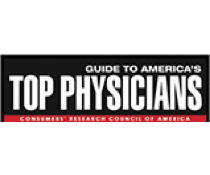 A herniated disc occurs when something damages the annulus (outer fibers) of a vertebral disc and the soft material inside ruptures. If the annulus tears near the spinal canal, the soft material inside the disc can push into the spinal canal, putting pressure on the nerves and causing pain. In children with lumbar disc herniation, the most common type of herniated disc, the cause of their herniated discs may be because of abnormal spinal and pelvic shape.
A herniated disc occurs when something damages the annulus (outer fibers) of a vertebral disc and the soft material inside ruptures. If the annulus tears near the spinal canal, the soft material inside the disc can push into the spinal canal, putting pressure on the nerves and causing pain. In children with lumbar disc herniation, the most common type of herniated disc, the cause of their herniated discs may be because of abnormal spinal and pelvic shape.
According to a new study published in the December issue of Neurosurgery, most children and adolescents with herniated discs in the lumbar spine may have a type of malformation of the spinal vertebrae.
While herniated discs occur in children, they are rare. The most common patients with herniated discs in the lumbar spine areyoung and middle-aged adults who have experienced an injury from a strong force such as a fall, or from sitting too long, or repeated injuries that add up over time. Disc herniations in people older than 60 are usually caused by degenerative changes occurring in the spine with aging.
The study, by Dr. Zhongjun Liu and his colleagues at Peking University Third Hospital in Beijing, looked into understanding how children and teens develop lumbar disc herniation without the “wear and tear” that causes herniated discs in older patients.
The researchers analyzed x-rays of 63 patients under 20 years old with lumbar disc herniation. All the patients required surgery for severe, disabling back pain that had not responded to other treatments. In nearly all patients (60 out of 63), the x-rays showed at least one type of malformation involving the lumbar spine and sacrum (base of the spine at the rear of the pelvis). The malformations were from either an abnormally high pelvis, affecting a herniation between the two lowest lumbar vertebrae, or abnormally low pelvis, affecting a herniation between the lumbar spine and sacrum.
The study’s results also suggest that both decompression surgery and spinal fusion are likely to be effective in young patients with low back pain from herniated discs. Thirty-six of the pediatric patients underwent a discectomy, a removal of the damaged portion of the disc, and 27 patients underwent discectomy as well as a fusion (arthrodesis) of the involved vertebrae. In all patients, the surgery led to significant reduction in back pain and disability, without much difference between the 2 treatment groups in this study.
Have you been experiencing back pain from a possible herniated disc? Contact our office to set up a consultation.









